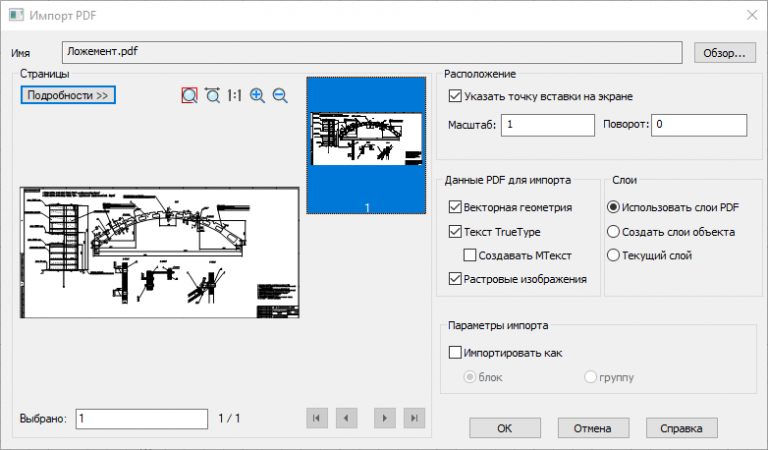Assessment of the economics of using UAVs in parcel delivery
The topic of unmanned aircraft is now very popular. Of course, the impetus for this was the use of unmanned technologies in modern military conflicts. But what about the civilian sphere of application? Video monitoring, agricultural work, private tasks – this is understandable. But can drones be used in real transport and logistics tasks? In this article we will try to understand the prospects for using unmanned systems in transport from a purely practical and economic point of view.
And so, to begin with, we will determine the type of UAV on which a typical logistics operation will be carried out, which we will also try to generalize.
For transport, I suggest using a vertical take-off and landing vehicle like the Mugin 2 or 3 Pro. To reduce operating costs and increase reliability, we assume that the entire power plant of the device is electric. The main characteristic we are interested in is the weight of the payload. With a take-off weight of up to 30 kg (so as not to encounter certification issues, which will greatly increase the cost of the project in the end, and to increase safety this is justified – if it falls, the damage will be minimal) with an electric power plant, you can count on a payload of about 10 kg.

Based on my design experience, we can safely state the following characteristics of the device:
Take-off weight – 30 kg.
Payload weight – 10 kg.
Battery capacity – 3000 Wh
The total flight range (on average, taking into account wind) is 200 km.
Average speed – 22 m/s (approx. 80 km/h).
Reliable resource – 1000 hours before replacing the power unit.
At the same time, the cost of this UAV complex, taking into account the ground component, will be no less (or rather more) 6 million rubles. Of this, the air part of the complex will cost about 4.5 million rubles. The cost estimate is based on personal experience, taking into account the small-scale production of products.
To service such a complex, you will need at least 2 UAV operators with an average salary of at least 120 thousand. rub. Since the cargo can be returnable, it is more correct to assume that there are operators at each point of the logistics chain, therefore the system must have at least 4 operators – 2 at one point and 2 at another.
Now to the logistics operation itself. Let's take the work of marketplaces like Ozon or Wildberries as a basis.
Let's assume we have a sorting center with a service radius of 50 km. The same center is a flight base where purchases are prepared for shipment and loaded onto a drone. Those. We are considering the use of a flying drone in the area from the sorting center to the delivery points. Let’s take a low load on the pick-up point of 100 people/day. Most parcels do not have a large mass, but a significant volume. Let’s agree that a drone is capable of delivering 3 parcels on average, and 2 parcels per customer. Thus, the daily volume of transportation is 200 parcels per delivery point. Therefore, the drone needs to make 67 round-trip flights. Let's assume that the average delivery distance is 25 km. Then the drone needs to fly 1675 km and make 134 takeoffs and landings. Each takeoff and landing, taking into account the work of sending the parcel, will take 3-4 minutes. The time spent on maintenance in this case will be almost 9 hours, and the time in the air will be 21 hours. Well, we didn’t make it in 24 hours. Let's put 2 drones on the line with the same number of operators. Ground equipment for the distribution center will cost us at least another 1.5 million.
Economy.
Let's start with the resource. Most manufacturers provide a 1000 hour warranty on electric motors. For our operating conditions, the main engine will have to be changed every 100 days. Roughly, 3 times a year is about another 300,000 thousand. rub. If we can achieve drone reliability of at least 10^-5 (one flight accident per 100,000 flights). Then you can count on the actual service life of drones in this mode to be about 2 years.
Thus, the complex itself will initially cost us 6,000 thousand rubles. 2 years of maintenance for at least another 1000 thousand rubles, taking into account other routine maintenance.
Now to the batteries. Considering the logistics operation described above, it will be necessary to have at least 10 sets of batteries. The battery life cycle is no more than 500 charges/discharges for UAVs in reality – 300. Thus, the batteries will last for a year, and after a year you will have to buy new ones. The cost of 12S (48V) batteries can be estimated at 1000 rubles. per A*h. We need approximately 65Ah on board, taking into account a set of 10 pieces. and even that – 650Ah or 650 thousand rubles.
The cost of the complex, taking into account depreciation, can be estimated at 7,650 thousand rubles.
After two years, most likely the aircraft will either be lost in an accident or written off. As a result, we will lose at least 4,500 thousand from the initial cost. The operation of ground-based equipment can possibly be extended for 4 years. Therefore, we will calculate the total cost for 4 years of full depreciation of the complex.
About electricity.
3000Wh is enough for a flight with a range of 200km. Since the system is a vertical takeoff and landing, it is necessary to evaluate the flow rate in these modes. For a UAV of this class, this will be about 200 W*h. Consumption over a distance of 25 km will be about 250 W*h. Thus, about 6 flights can be completed on one battery. Then the total consumption will be about 30,000Wh per day. Taking into account the efficiency of charging stations, this is about 40 kWh per day. All other equipment will consume no more than 400 W*h/h, taking into account round-the-clock operation of 9.6 kW*h per day. Or a total of 18,100 kWh per year or (taking into account 6 rubles/kWh) 108 thousand rubles.
The entire cost of operating such a complex per year, taking into account depreciation, will be about:
(7,650*2 +4500*2+650*4+108*4+120*4*4*1.75*12)/4=16913 thousand rubles, where
7650*2 – cost of 2 complexes
4500*2 – cost of 2 new drones for another 2 years of operation
650*4 – battery replacement for the 3rd and 4th year of operation for 2 drones
108*4 – cost of energy consumption for 4 years
120*4*4*1.75*12 – operator’s salary including taxes (approximately)
Taking into account the transportation of 73,000 parcels per year, the added cost of delivery purely from the technical component (we do not take into account overhead costs) will be 231 rubles per parcel. It is also significant that 60% of the cost is the operators’ salary. Obviously, their work needs to be minimized through the use of intelligent systems.
Of course, this figure can be safely multiplied by at least 1.5, taking into account taxes, insurance, accidents and other things.
Let's now make an approximate calculation of the cost of delivering parcels in the traditional way to understand what we are aiming for.
The cost of a truck that can deliver 200 parcels per day can be estimated at 3,000 thousand rubles. considering that it is new. We will need at least 2 drivers and 2 loaders with a salary of around 80 thousand rubles. The delivery distance will increase, taking into account urban development, from 25 km to a minimum of 35 km. In a year, the car will travel 25,550 km, making a round trip every day, without weekends. Taking into account this mileage, we will accept full depreciation after 10 years. On average, you will have to spend at least 200 thousand per year on annual depreciation. The average consumption for such a car will be about 15 liters per 100 km in the urban cycle, therefore the annual consumption of approximately 2830 liters of fuel at a cost of 62 rubles is 237 thousand rubles. To adequately estimate the salary, let’s assume that the driver makes 10 deliveries per day within the specified radius. The total cost of this solution is:
3000/10+200+237+80*1.75*12*4/10 = 1407 thousand rubles.
Those. traditional delivery is 12 times cheaper.
What can be cut?
With mass production, the cost of equipment and the UAV complex can be reduced by at least half, and if you entrust the control of all systems and shipments to robotic systems, then only one operator will be required, but for this one-time investments in such a system should be in the region of several tens of billions of rubles. But then the cost of such shipments can be halved; further reduction will still be limited by the cost of foreign components and energy sources.
Thus, the use of a logistics solution based on UAVs is quite feasible, but it is very expensive. As can be seen from our calculations, a number of important aspects must be observed:
– Continuity of system operation to increase profitability.
– Work to improve the reliability of the UAVs themselves and extend their service life, reducing costs.
– Introduction of automated systems to reduce service personnel and reduce their qualifications.
As for the air part, drones should have a large internal volume while maintaining high aerodynamics in order to reduce time in the air and increase the cargo they carry. Taking into account the use of composite molding and competent design, the problem is completely solvable.
Of course, such a problem cannot be solved locally and it will show really high efficiency as an integrated solution within the framework of a large project.
The most important thing is the creation of a control and monitoring system for UAV systems that are massively in the air. This is a really complex project that requires good investments. The introduction of alternative means of navigation and control of UAVs will also be required.
In general, building logistics systems based on UAVs is a completely feasible and economically justifiable idea, taking into account the reduction in traffic on the roads and their depreciation, reduction in delivery time and a lot of goodies from the fact that this will not be done by a truck, but by an electric flying robot, but as always everything will run into politics and short-sightedness in certain areas of our lives.





